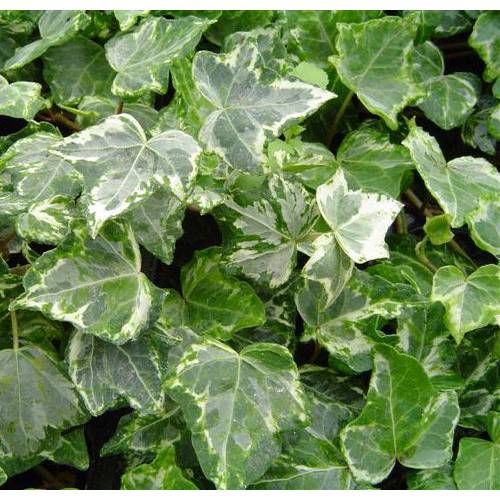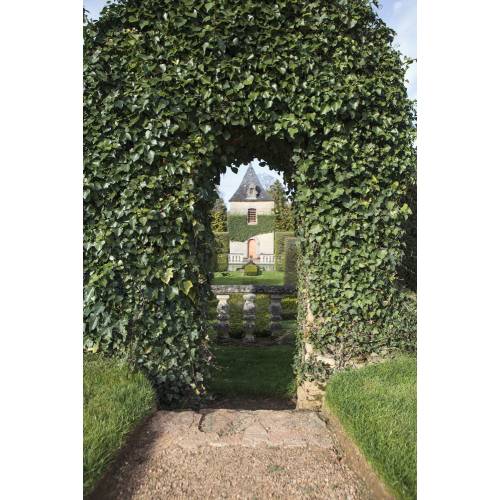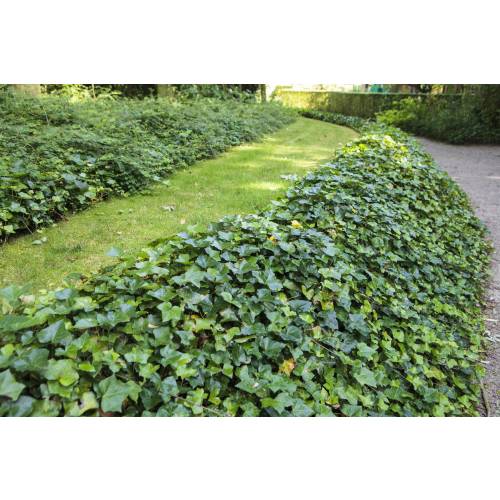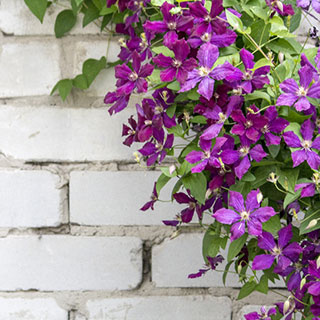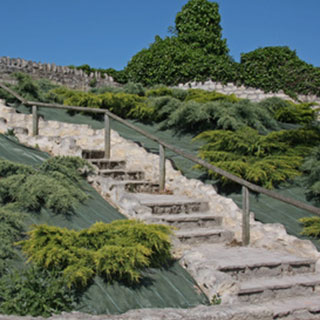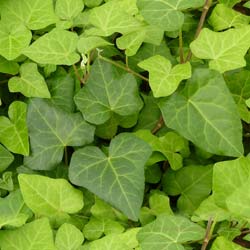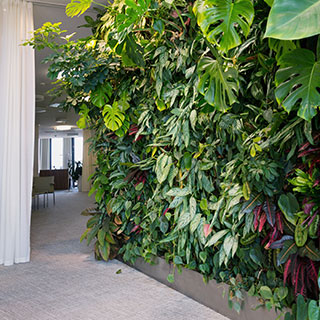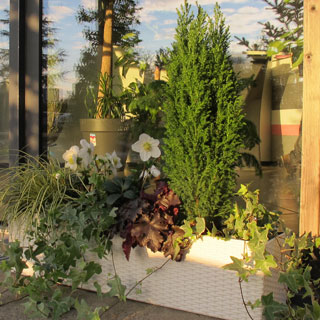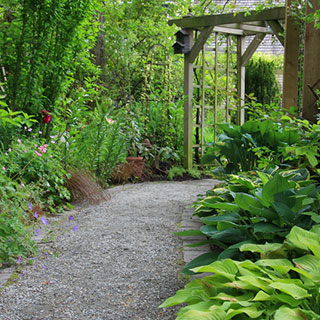
Plants
Ivy 'Elegantissima' / Hedera helix Elegantissima
-
Area of origin: Europe.
Adult Dimensions: Height up to 20m, width up to 20m (65.6').
Foliage: Evergreen, yellow veins.
Soil Type: All.
Hardiness: Hardy.
Exposure: Shade to full sun.
Plantation density: 6 / m².
Properties and uses:
This ivy is very popular for the lovely yellow veined leaves. Ivy, like vines is very vigorous once established and must be cut regularly to keep under control. This is one of the only climbing plants that will grow well in the corners and dark areas of the garden. It can also be used as ground cover. Inside it can be used to beautiful effect all year round in hanging pots. Beautiful yellow-green flowers in autumn produce black berries.
Jean-Michel Groult advises you
It is without a doubt the most widely grown of the climbing plant, yet, Ivy does not solely climb. To cover the ground or create topiaries, you can also count on it!
Ivy has an unrivalled diversity. It is as the origin of thousands of cultivars, all perfectly cold-resistant. As well as the foliageís variegations, all Ivy varieties have diverse shapes and colours. The leaves can be heart-shaped, star-shaped, be reticulated or purple, lacy or frizzy. Their shape can be erect or climbing depending on the cultivars. Good to know: the intensity of the variegation depends on the specimenís exposure.
Several usages
Ivies are really useful not only to cover a low wall but also to hide a stump (or a very large stone) or again to cover the ground. Ivy is one of the rarest plant which can be grown as a ground-covering plant in a dry, shady site, where nothing else grows like under chestnut trees or under conifers Their use does not stop there and the possibilities of displaying these supple plants are endless : it is up to you to invent new ones.
In shape, Ivy
Impatient gardeners will prefer forming a topiary with Ivy rather than a large Box specimen The process is really easy: you only need to take a metallic frame of the wished shape, to create yourself or to buy and make the Ivy climb on it You need to fix the structure to the ground to resist wind The trained stems will get denser in a few month and you then will get your topiary.
On the same idea, you can create green garlands with Ivy. For this, stretch a solid metal wire between decorative stakes and train the Ivy on that wire. Like that, you can create a kind of green banister. Allow three years for a complete effect, as Ivy grows quickly but not that fast!
To garnish a wall
A wall decorated with Ivy has opponents as well as partisans. On a healthy wall, a beautiful coat of leaves does not pose any problems to the building. Once removed, in the future, its only weak point will be to leave visible marks on the wall, but it can live for decades on a wall. On the other hand, do not envisage garnishing an old wall with Ivy if it has cracks or if the wall-facing does not hold very well, as Ivy sneaks in cracks. In all cases, do not let Ivy climb too high (as for all climbers anyway) and cut growth which get 30cm away from gutters, as a safety measure.
And what about on trees?
Be careful though as Ivy can interfere with the tree growth on which it climbs if you let it develop too much. Ivy is not a parasite, but it can deprive it of part of its branches and the tree vigourís can suffer. Prune the Ivy so it does not grow higher than the top of the tree trunk.


